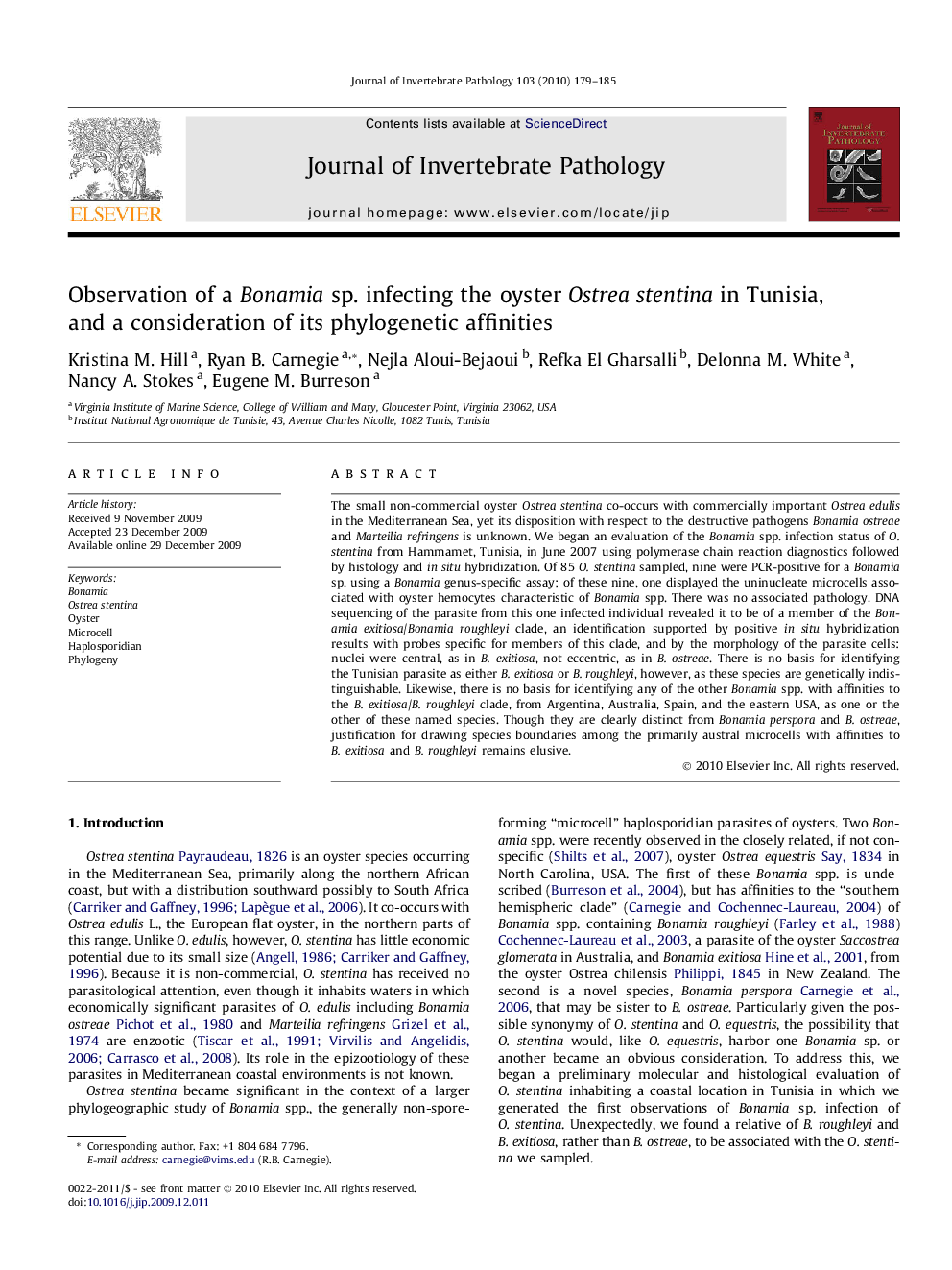| کد مقاله | کد نشریه | سال انتشار | مقاله انگلیسی | نسخه تمام متن |
|---|---|---|---|---|
| 4558302 | 1329933 | 2010 | 7 صفحه PDF | دانلود رایگان |

The small non-commercial oyster Ostrea stentina co-occurs with commercially important Ostrea edulis in the Mediterranean Sea, yet its disposition with respect to the destructive pathogens Bonamia ostreae and Marteilia refringens is unknown. We began an evaluation of the Bonamia spp. infection status of O. stentina from Hammamet, Tunisia, in June 2007 using polymerase chain reaction diagnostics followed by histology and in situ hybridization. Of 85 O. stentina sampled, nine were PCR-positive for a Bonamia sp. using a Bonamia genus-specific assay; of these nine, one displayed the uninucleate microcells associated with oyster hemocytes characteristic of Bonamia spp. There was no associated pathology. DNA sequencing of the parasite from this one infected individual revealed it to be of a member of the Bonamia exitiosa/Bonamia roughleyi clade, an identification supported by positive in situ hybridization results with probes specific for members of this clade, and by the morphology of the parasite cells: nuclei were central, as in B. exitiosa, not eccentric, as in B. ostreae. There is no basis for identifying the Tunisian parasite as either B. exitiosa or B. roughleyi, however, as these species are genetically indistinguishable. Likewise, there is no basis for identifying any of the other Bonamia spp. with affinities to the B. exitiosa/B. roughleyi clade, from Argentina, Australia, Spain, and the eastern USA, as one or the other of these named species. Though they are clearly distinct from Bonamia perspora and B. ostreae, justification for drawing species boundaries among the primarily austral microcells with affinities to B. exitiosa and B. roughleyi remains elusive.
Journal: Journal of Invertebrate Pathology - Volume 103, Issue 3, March 2010, Pages 179–185